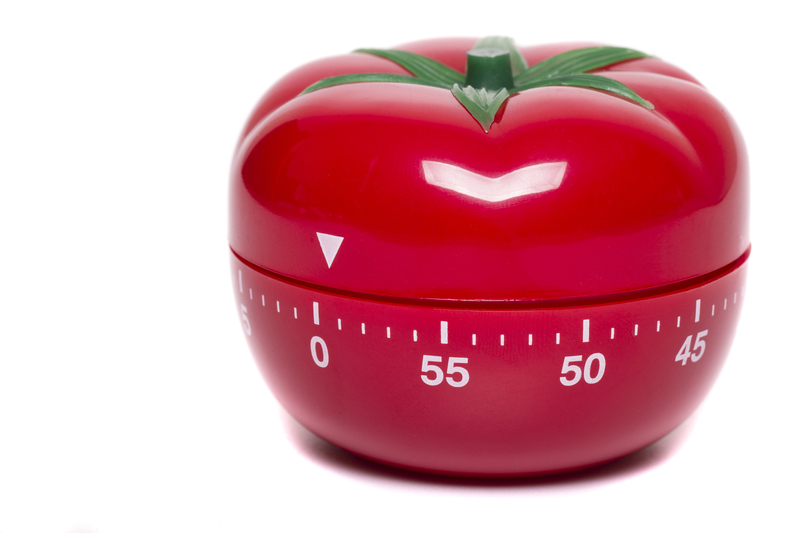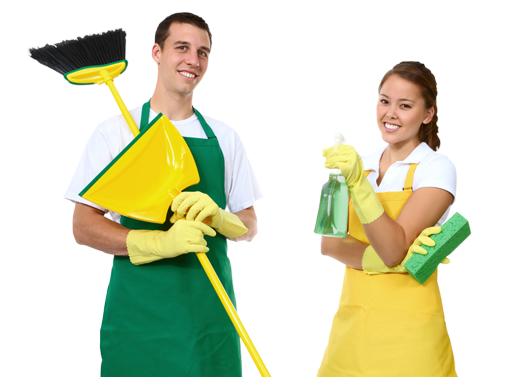Strategies for a Clean, Mold-Free Bathroom
Posted on 24/08/2025
Strategies for a Clean, Mold-Free Bathroom
A clean, mold-free bathroom is essential for maintaining a healthy and pleasant home environment. Bathrooms, with their constant moisture and warmth, provide the perfect conditions for mold growth, making routine cleaning and preventative strategies vital. In this comprehensive guide, we'll explore expert-approved, actionable strategies to keep your bathroom spotless and free from mold. Discover effective cleaning routines, prevention tips, the best cleaning products, and insights that will help you maintain a healthy, hygienic, and inviting bathroom all year round.
Understanding Mold in Bathrooms
Before diving into bathroom cleaning strategies, it's important to know why mold develops in bathrooms. Mold is a type of fungus that thrives in damp, warm environments. Bathrooms are susceptible because of frequent hot showers, limited ventilation, and numerous water sources.
- Common mold types: Black mold (Stachybotrys chartarum), mildew, and other fungal species.
- Where it grows: Grout lines, tiles, ceilings, shower curtains, and beneath sinks.
- Health risks: Potential respiratory issues, allergies, and other health concerns.
Therefore, maintaining a clean and mold-free bathroom isn't just about aesthetics; it's about safeguarding your health.

The Importance of Moisture Control
The most crucial strategy for a mold-free bathroom is moisture control. Mold spores are everywhere, but they can only develop and thrive in sufficiently moist environments.
Key Moisture Control Methods
- Improve ventilation: Use exhaust fans during and after showers. Leave doors and windows open when possible.
- Wipe down wet surfaces: After using the shower or bath, quickly dry tiles and glass to remove lingering moisture.
- Use a dehumidifier: In humid climates, a small bathroom dehumidifier can make a significant difference.
- Fix leaks promptly: Dripping faucets, leaky pipes, or poor seals under sinks can, over time, add significant moisture to the space.
By tackling the moisture issue at the source, you make your bathroom considerably less hospitable to mold.
Developing an Effective Bathroom Cleaning Routine
A consistent cleaning schedule is the backbone of bathroom mold prevention. Regular cleaning eliminates soap scum, grime, and potential mold colonies before they have a chance to take hold.
A Sample Weekly Bathroom Cleaning Routine
- Monday: Clean the toilet bowl, seat, and handles using a disinfecting cleaner.
- Tuesday: Wipe down sinks, faucets, and countertops with an antibacterial spray.
- Wednesday: Tackle shower areas, focusing on tiles, grout, and glass surfaces with a mold-inhibiting cleaner.
- Thursday: Mop the floor with a vinegar-based or commercial floor cleaner to kill any lingering spores.
- Friday: Replace towels and bath mats with clean, dry ones.
- Saturday: Wash shower curtains and liners (if machine-washable) or wipe them down with a mildew-removing solution.
- Sunday: Inspect for leaks, check caulking and grout, and repair as necessary.
A structured routine not only guarantees a sanitary space but also makes deep cleaning easier and less daunting.
Best Cleaning Products to Prevent Mold in Bathrooms
Choosing the right cleaning products is key for controlling bathroom mold. Some cleaners are specifically formulated to kill mold and mildew, while others help prevent their return.
Top Cleaning Solutions for Bathrooms
- Vinegar: A natural, non-toxic option, vinegar is acidic and inhibits mold growth.
- Hydrogen peroxide: An effective mold killer; simply spray on affected areas and let it sit before scrubbing.
- Borax: Mix with water to create a powerful cleaning solution for tiles and grout.
- Bleach: Highly effective against mold, but use with caution - ensure proper ventilation and avoid mixing with other chemicals.
- Commercial mold removers: Look for products with EPA approval and follow manufacturer instructions.
- Essential oils (tea tree, eucalyptus, lavender): Add to cleaning solutions for a natural antibacterial boost and pleasant fragrance.
Tip: Always test new cleaners on a small, inconspicuous area of your bathroom to ensure they do not cause damage or discoloration.
Smart Preventative Measures for a Mold-Free Bathroom
Proactive prevention is as important - if not more so - than reactive cleaning. By making small adjustments to your bathroom habits and layout, you can significantly reduce your risk of mold problems.
Essential Mold Prevention Tips
- Use a squeegee: After showering, run a squeegee over tiles and glass to remove excess water.
- Hang towels and mats up to dry: Don't leave wet textiles on the floor or in the hamper.
- Choose mold-resistant materials: Install mildew-resistant shower curtains, paints, and caulk in high-moisture areas.
- Leave the shower curtain/door open after use: This helps air circulate and dry out the shower stall.
- Declutter: Minimize personal items on bathroom surfaces. Mold can grow on bottles, sponges, and loofahs if left damp.
- Regularly replace air filters: If your bathroom has an HVAC vent, ensure filters are clean and changed regularly.
Deep Cleaning Techniques for Severe Mold Problems
Sometimes, despite your best efforts, mold may take root in hard-to-reach places or go undetected behind tiles and drywall. If you're battling a stubborn mold problem, follow these deep cleaning strategies:
Step-by-Step Deep Clean for Moldy Bathrooms
- Wear protective gear: Don rubber gloves, a mask, and eye protection to avoid inhaling spores or harsh chemicals.
- Remove affected materials: Severely moldy caulk, wallpaper, tiles, or drywall may need to be replaced.
- Clean thoroughly: Scrub moldy surfaces with your chosen cleaner, using old toothbrushes for grout lines.
- Disinfect all surfaces: Apply a sanitizing solution to kill any remaining spores.
- Dry thoroughly: Use fans, open windows, or a dehumidifier to ensure the bathroom is completely dry.
- Address the root cause: Examine for persistent leaks or poor ventilation and fix them to prevent recurrence.
If the affected area is larger than 10 square feet, it is advisable to contact a professional mold remediation service. Mold behind walls or under flooring may require specialized removal.
Best Ventilation Solutions for Mold-Free Bathrooms
Without effective ventilation, even the cleanest bathroom can develop humidity issues. Adequate air circulation is one of the easiest ways to maintain a mold-free bathroom environment.
Top Tips for Improving Bathroom Ventilation
- Upgrade your exhaust fan: Modern fans are more efficient and often include humidity sensors for automatic operation.
- Install a window: If possible, a window that opens provides instant ventilation after each use.
- Leave interior doors open: When the bathroom is unoccupied, keep the door ajar to encourage air flow.
- Use a portable fan: Direct a small fan towards damp areas after showers to speed up drying.
- Check for obstructions: Make sure vents and fans are dust-free to keep air moving efficiently.
Ventilation is often overlooked, but it is a foundational tactic in the fight to maintain a clean and dry bathroom.
Routine Maintenance Tips for Long-Term Mold Prevention
Preventing mold is an ongoing process. Incorporate these maintenance tips into your long-term bathroom mold prevention strategy:
- Reseal grout and caulk regularly: Both can degrade over time, allowing moisture to seep in. Reapply sealant at least once a year.
- Monitor humidity levels: Invest in a hygrometer and keep humidity below 50% whenever possible.
- Check appliances: Inspect washing machines, plumbing, and water heaters near or in the bathroom for leaks.
- Inspect hidden corners: Don't neglect areas behind toilets, under sinks, and behind furniture.
- Update materials: If remodeling, choose water-resistant finishes for floors, walls, and cabinetry.
Staying vigilant with periodic inspections will help you catch and address any issues before they develop into full-blown mold infestations.
Natural Solutions for Chemical-Free Bathroom Cleaning
For those who prefer eco-friendly and non-toxic alternatives, there are plenty of effective, natural cleaning options for keeping your bathroom mold-free.
Popular Green Cleaning Methods
- White vinegar: Spray undiluted onto moldy areas, wait an hour, then scrub and rinse.
- Sodium bicarbonate (baking soda): Make a paste with water, scrub onto tiles and grout, then rinse clean.
- Tea tree oil spray: Combine a teaspoon of tea tree oil with a cup of water in a spray bottle; spritz onto surfaces for natural mold inhibition.
- Lemon juice: Use as a spot cleaner for soap scum and mildew thanks to its acidity and fresh scent.
These natural strategies not only keep your bathroom healthy but also benefit the broader environment.
What to Do If You Find Mold in Your Bathroom
Even with the best plans, sometimes mold finds a foothold. Here's what to do if you notice mold starting to develop:
- Identify the source: Is it a one-off incident or a sign of deeper moisture problems?
- Clean immediately: For small spots, use a suitable cleaner and dry the area thoroughly.
- Check ventilation: Ensure your exhaust fan is working and that the bathroom is drying out fully after each use.
- Monitor for regrowth: If the mold quickly returns, investigate hidden leaks, damaged grout, or underlying plumbing issues.
- Call the pros: For persistent, widespread, or toxic mold, professional intervention is the safest choice.
Frequently Asked Questions: Keeping a Mold-Free Bathroom
Q: How often should I clean my bathroom to prevent mold?
A: At least once a week, with frequent touch-ups for high-moisture areas such as the shower and sink. Daily habits like wiping wet surfaces can make a huge difference.
Q: Can I use essential oils to prevent mold?
A: Yes! Tea tree, clove, and eucalyptus oil have natural antifungal properties and can be added to DIY cleaning sprays for added effectiveness.
Q: Is bleach safe for bathroom cleaning?
A: Bleach is effective but must be used carefully with good ventilation and proper dilution. Never mix bleach with ammonia or other cleaners, as it can produce toxic fumes.

Summary: Achieving a Spotless, Mold-Free Bathroom
Keeping your bathroom clean and mold-free doesn't have to be a chore. By implementing regular cleaning routines, controlling moisture, using effective cleaning products, and upgrading ventilation, you can ensure a fresh, hygienic space for you and your family.
- Develop a weekly cleaning schedule and stick to it.
- Prioritize proper ventilation and moisture management.
- Act fast if you discover mold to prevent spread.
- Consider natural, non-toxic solutions for everyday cleaning.
By following these strategies for a clean, mold-free bathroom, you not only increase your home's value and appeal but also protect your health and well-being.
Further Reading
Start today by assessing your bathroom's weak points and putting these expert recommendations to work for a spotless, healthy, mold-free space you'll love!





